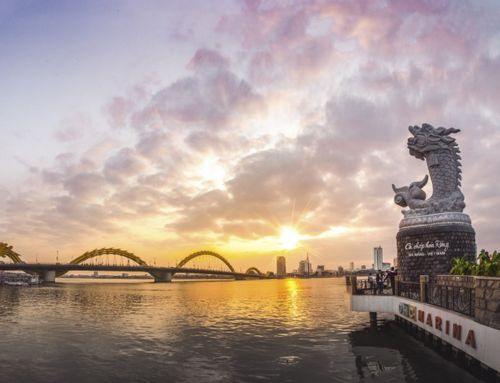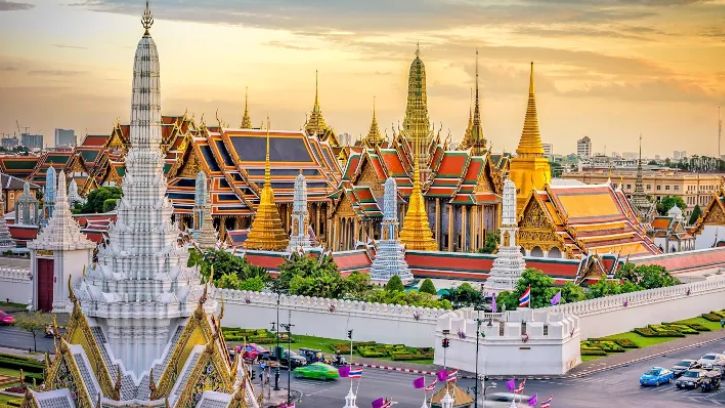Vietnam is one of the most popular budget travel destinations in the world. While one can have a lavish stay in this Asian paradise, it is still quite easy to travel on a tight budget. The easiest way to travel frugally is to know how and where to find bargains!
HOW TO TRAVEL TO VIETNAM ON A BUDGET?
Food and drink
Comparatively speaking, food in Vietnam is cheap, especially if you avoid the expensive restaurants that are usually aimed at tourists. One of the cheapest meals you can find is banh mi (a type of Vietnamese bread). They are plump, unfussy, and delicious! Another casual dining option is to visit Com Binh Dan – a street food style with a variety of dishes. For less than 50,000 VND, you can have a hearty and proper lunch. For less than $2 you’ll also get a bowl of hot pho, a cold Vietnamese iced coffee, or fresh market-cut fruit! The great thing about frugal dining in Vietnam is that you don’t have to sacrifice taste and quality. If you are looking for cheap international food, backpackers in Ho Chi Minh City or Hanoi are the best places to go. Many small establishments and restaurants cater to the tourist crowds and offer basic international meals at very low prices.

When buying water bottles, try to buy them at small stores or stalls. Bottles of water at hotels or restaurants can be very expensive. Another inexpensive option to rehydrate at a restaurant is to order iced or iced tea. It is very refreshing on hot days and is generally safe. A cup of tea will cost much less than bottled water. While mixed drinks at a five-star establishment are expensive in Vietnam, beer and vodka are pretty cheap! Beer prices are lower than in the US or Australia – $0.50USD can buy you a big bottle of beer! Even some imported beers are not expensive. On the contrary, wine is a bit expensive because Vietnam is not famous for its wine production. Most wines are imported into the country mainly to serve tourists, so the difference is very high.
Transportation
Everyone knows that the plane will be more expensive than the bus and train but if time is short and if your travel schedule has many destinations, then the plane may be the best option for you. Vietnam Airlines is the national airline and although they sometimes sell seats, they are not a low-cost airline. With that said, Vietnam Airlines offers a big discount if you book in the last five days of every month (you don’t have to go on the last five days, just book when there’s a discount). In addition, Air Asia flies to many destinations in Vietnam and is a budget-friendly airline. During peak season to a popular destination, we found that there was little difference in price between the two airlines. In these cases and if demand for seats is high, early booking can sometimes be beneficial as prices can increase as the flight date approaches.
For those who have more time to travel by land transport, open tour buses are a great way to get from one destination to another. An open tour bus is a bus that operates independently with an organized tour. This is by far the cheapest way to travel longer distances in Vietnam. For example, you can take a bus from Ho Chi Minh City to Mui Ne (4-7 hours drive) for 6 USD. Or, for about $50-60, you can stop at as many points on your journey and stay as long as you like (provided you give 24 hours notice before boarding the next bus). There are different companies that operate long-distance buses – you can book tickets at the travel agency or at the actual company office. In the backpacker area, offices line up one after another. Buses are assigned seats, so you should buy tickets early to get the seat you want. Trains are also popular means of transportation for long trips. On a train, Vietnam Railways operates most of the carriages, but many other private companies operate tourist cars on the same train. Private tour companies are geared towards tourists, but Vietnam Rail cars are usually 7-10 USD cheaper than tourist cars. To save your precious Vietnamese Dong, you can travel by night bus or train and save a night’s stay!
When in the city, the transportation options are city bus, motorbike taxi (motorbike taxi) and taxi. City buses are generally the cheapest, but some parts of the city can be harder to reach. Taxi prices in the city are relatively high and can add up quickly! A practical and economical alternative to buses and taxis in the city is a xe om, which literally translates to ‘taxi hug’. The ‘motorbike taxi’ is easy to spot – you’ll see many cyclists waiting on street corners expecting to carry tourists. They can be pretty cheap assuming you’ll negotiate a discount. Of course, the price depends on where you want to go, but if you go from place to place in District 1, Ho Chi Minh City, a motorbike taxi will not exceed 20,000 VND. For comparison, a short taxi ride in District 1 can be around 30,000 VND. If you want to venture to some other county further afield, recruit a car om is not only more economical but also a great way to experience the city!

Hotel
There are so many budget accommodation options in Vietnam! In cities, many tall and narrow houses have been converted into guest houses or small hotels. While there are quite a few rates from city to city, it is easy to find a room for $10-30 a night. Most will also have some kind of breakfast included – eggs, pancakes, bread, butter, tea, coffee, juice and more! Finding a hotel that includes a meal can save a lot of money in the grand scheme of things.

Homestay has become an increasingly popular form of accommodation, especially in small towns in Vietnam. Not only are they budget-friendly, but they are also a great way to understand a little bit about daily life in Vietnam. Most homestays are booked through travel agencies, with the exception of tourist villages like Sapa, where you can walk to many of the advertised homestays. In Vietnam, a permit is required to host tourists in their homes. The hostel turned out to be a great bargain! Meals are also often included and although they are not fancy they are usually more than enough. We recommend pre-buying water and any other drinks you may need at a store or street vendor instead of buying at a homestay – bottled water is overpriced.
Another type of accommodation option you may be interested in is ‘couchsurfing’. This phenomenon has been a part of Vietnam tourism for a long time and is becoming increasingly popular among domestic backpackers. If you’re not familiar with that term, Couchsurfing is a means for people with homes (and couches) to connect with travelers who need a place to rest. Couchsurfing’s greatest appeal – it’s free! If you’re traveling on a really tight budget, we recommend checking out this service (www.couchsurfing.org).
Activities and Shopping
Activities and attractions are often the biggest expense during your stay in Vietnam. Places like the Cu Chi tunnels or various monuments may charge an entrance fee, and if these are the places you want to visit, there’s not much you can do about that. If you enjoy tours or attractions while traveling, we recommend you factor this into your budget. It can be a great way to understand the culture, and you can cut your costs in other ways.
When buying souvenirs or goods, avoid tourist markets like Ben Thanh Market. It is very tempting to shop in such places because of the convenience. But simply go out and visit the street vendors. Prices are much lower and they are more open to haggling. If possible, visit Lon market in District 5. This is a wholesale market and you will be surprised at the difference in the price of goods between District 5 and District 1!


